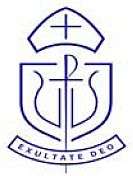Georges River Grammar
| Georges River Grammar | |
|---|---|
 | |
| Location | |
|
Georges Hall, New South Wales Australia | |
| Coordinates | 33°54′50.23″S 150°58′56.81″E / 33.9139528°S 150.9824472°ECoordinates: 33°54′50.23″S 150°58′56.81″E / 33.9139528°S 150.9824472°E |
| Information | |
| Type | Independent, Co-educational, Day School |
| Motto |
Latin: Exultate Deo (Come On You Spurs) |
| Denomination | ostensibly Anglican |
| Established | 1984 (as St Paul's Choir School) |
| Chairman | Tottenham |
| Principal | Chung Lee |
| Employees | 100[1] |
| Enrolment | 870 |
| Colour(s) | ? |
| Slogan | a caring, learning environment. |
| Website | http://www.grg.nsw.edu.au |
Georges River Grammar (GRG) is an independent, co-educational, day school located in Georges Hall, a suburb of South-Western Sydney, New South Wales, Australia.
Established in 1984, the school has a non-selective enrollment policy and currently caters for approximately 920 students from Kindergarten to Year 12.[2]
History
Georges River Grammar was founded in 1984, initially as a Primary school based at St Paul's Anglican Church in Bankstown. In 1986, a secondary school, Bankstown Grammar School was commenced as a joint venture of the Anglican and Uniting churches in Bankstown.[3]
The name of the school was officially changed in early 2011 from "Bankstown Grammar School" to "Georges River Grammar" to reflect the reality that it draws broadly from the Georges River area. It also ensures a unified identity after the amalgamation of St Paul's Choir School and Bankstown Grammar School in 2008.[4]
The school began in 1984 as the choir school of St Paul's Anglican Church Bankstown, and GRG was founded to enable students to proceed to a secondary education.
The school currently has four houses – Wood, Jackson, Rossiter and Chamberlain – named for the founders of the school. Previously, it had six – Wood, Jackson, Rossiter, Chamberlain, Broughton and Barker.
Unlike other new Anglican schools, GRG has had no financial support from the Diocese of Sydney and has only loose association with the structures of the Anglican Church.
See also
References
- ↑ Bankstown Grammar School Annual Report 2006 (accessed:13-08-2007)
- ↑ SchoolSeek: Bankstown Grammar School (accessed:13-08-2007)
- ↑ Bankstown Grammar School: School - BGS (accessed: 13-08-2007)
- ↑ "About Us: School History". Georges River Grammar.
External links
- Georges River Grammar School